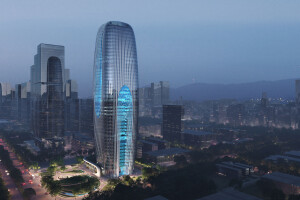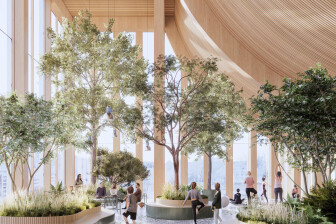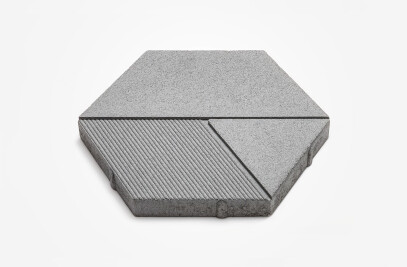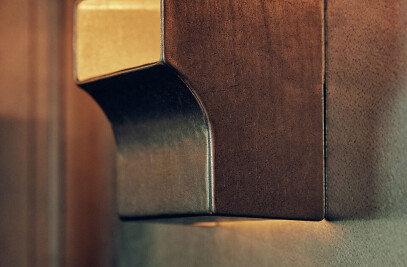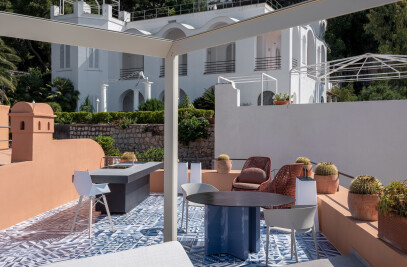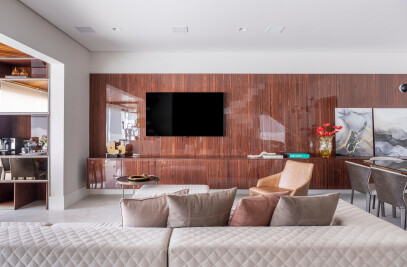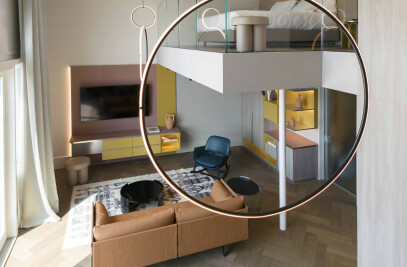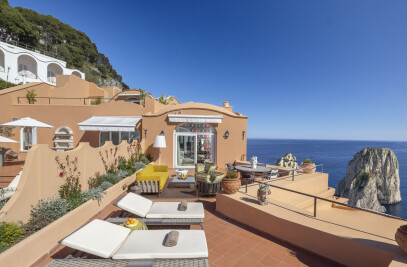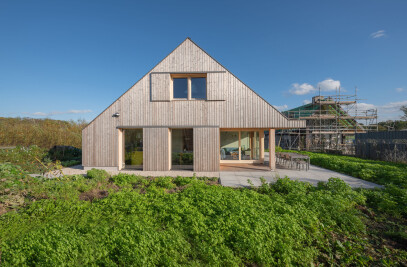Ziel is a new 15-story residential building in Montevideo, the capital of Uruguay, that will bring family homes to a densely populated neighborhood. The first project in the South American country by Rotterdam-based architectural firm MVRDV, Ziel comprises a loosely-stacked series of individual homes. The layout is designed to ensure light and air spread through the entire building, and includes a number of green and communal spaces for residents to enjoy and share.
Ziel is located in Montevideo’s southern tip, close to the ocean. The building occupies a corner plot next to Villa Biarritz, a park that serves as a green heart in the dense Punta Carretas neighborhood. In its design, MVRDV extends the greenery of the park throughout the building: from the courtyard to the private terraces and shared patios located on various levels.
The green spaces in Ziel are a key feature. “With this abundant outdoor green space, the project is envisaged as a stack of country villas embedded in the dense city,” says MVRDV. The stack of villas is imagined as a series of contemporary stone blocks, with a harmonious palette of warm, earthy tones. MVRDV explains that “the four different types of stone used in the façade help to differentiate each apartment as its own independent entity, while bronze window frames help to tie together the exterior finishes.” The building contains 40 apartments in all, each with a generously-sized balcony or loggia. Ten unique layouts are made possible by the shifting floorpans. The majority of apartments have 3 bedrooms, with one 2-bedroom apartment on the first floor, and four larger 4-bedroom corner apartments on the upper floors.
“In Montevideo, like in many other cities, it’s common that once people start a family, they leave — buying a villa in the countryside and reducing the vitality of the city,” says MVRDV founding partner Jacob van Rijs. “What if we were able to give them the villa they want, and keep them in the city at the same time, offering a combination of urban and suburban lifestyle[s]? Here, we attempt to give a prototypical solution to combine the two.”
“With our design, we wanted to show that you can have the spaciousness and nature of the countryside on the tenth floor in the middle of the city,” adds MVRDV partner Frans de Witte. “We believe the city should be for everyone, including families with children.”
Patios on the second, fourth, sixth, and eighth floors are shared by the building’s residents. Each patio creates a 2-story open space that connects the street with the courtyard. The patios are filled with plants, helping to bring light and fresh air to the deep courtyard. Moreover, they have a visual appeal: for the residents in the inner apartments, who can have a view beyond the courtyard, and for pedestrians who can see the inside of the building. “These ‘sky gardens’ will share a common language, but each will have a unique character and program, providing users with spaces for different kinds of activities and unobstructed views of the ocean to the east,” says MVRDV.
In a bid to offer a vibrant home environment, Ziel’s design includes an array of amenities that residents will benefit from, including: a rooftop lounge, dining room, landscaped terrace, and swimming pool, and a gym and spa on the lower levels. A restaurant on a corner of the ground floor will add to the vibrancy of the neighborhood.
The design of the building targets LEED-Platinum certification. MVRDV’s design incorporates a number of elements that work to reduce the building’s energy consumption: The use of overhangs limit solar gain, while the porosity of the structure means apartments are naturally ventilated. Solar panels on the roof contribute to the building’s energy use, and a water capture and retention system irrigates the foliage, reducing the building’s impact on the local environment.
MVRDV’s meticulous attention to the use of greenery helps to improve the biodiversity of the neighborhood. Ziel’s smart biophilic design works to reconnect residents and nature within the built environment, improving health and well-being, and fostering social cohesion.















